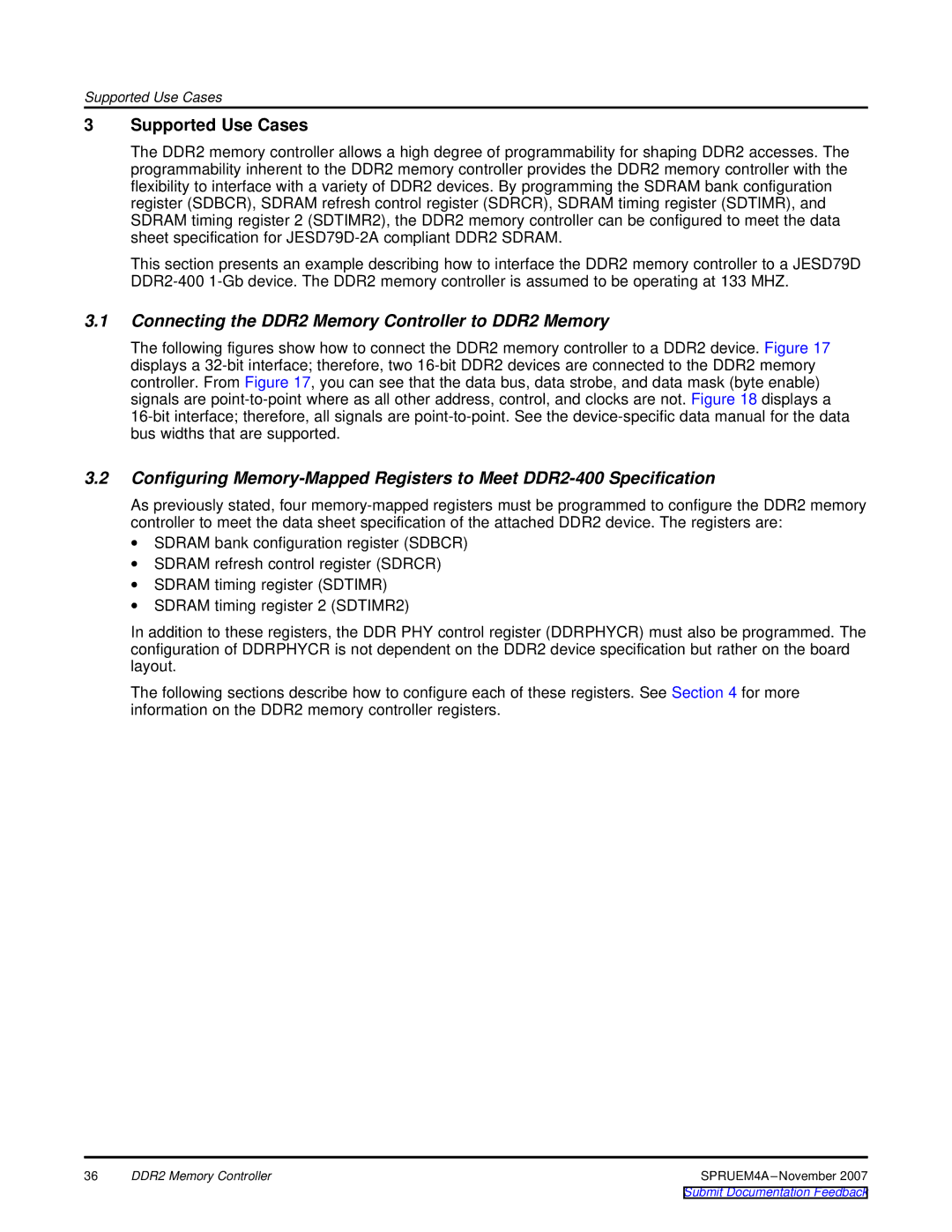
www.ti.com
Supported Use Cases
3Supported Use Cases
The DDR2 memory controller allows a high degree of programmability for shaping DDR2 accesses. The programmability inherent to the DDR2 memory controller provides the DDR2 memory controller with the flexibility to interface with a variety of DDR2 devices. By programming the SDRAM bank configuration register (SDBCR), SDRAM refresh control register (SDRCR), SDRAM timing register (SDTIMR), and SDRAM timing register 2 (SDTIMR2), the DDR2 memory controller can be configured to meet the data sheet specification for
This section presents an example describing how to interface the DDR2 memory controller to a JESD79D
3.1Connecting the DDR2 Memory Controller to DDR2 Memory
The following figures show how to connect the DDR2 memory controller to a DDR2 device. Figure 17 displays a
3.2Configuring
As previously stated, four
∙SDRAM bank configuration register (SDBCR)
∙SDRAM refresh control register (SDRCR)
∙SDRAM timing register (SDTIMR)
∙SDRAM timing register 2 (SDTIMR2)
In addition to these registers, the DDR PHY control register (DDRPHYCR) must also be programmed. The configuration of DDRPHYCR is not dependent on the DDR2 device specification but rather on the board layout.
The following sections describe how to configure each of these registers. See Section 4 for more information on the DDR2 memory controller registers.
36 | DDR2 Memory Controller |
